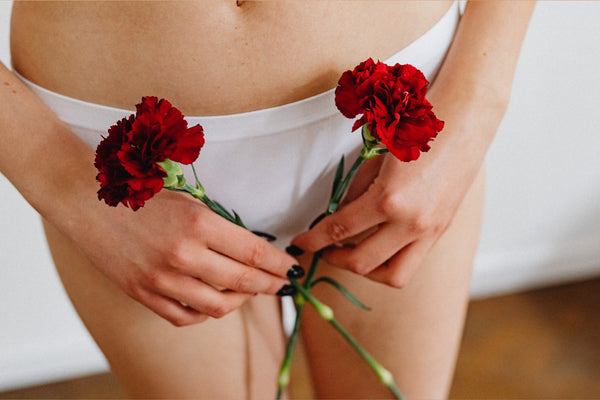3/4 The menstrual cycle. ovulation
We started two weeks ago our discovery of the female hormonal cycle ou period . After looking into rules or menstruation, And then the follicular phase, let's tackle the ovulatory phase together or ovulation.
This very short moment of the cycle is central and important. It is at this precise moment of female cycle that fertilization can take place. The body worked hard and did everything possible to accommodate the sperm. time of fertilization as well as fertility, ovulation is the culmination of female cycle. Explanations, symptoms, calculation, temperature, duration, you will be unbeatable on the ovulation period thanks to Loulou!

The period of ovulation during the menstrual cycle
As we have seen in our previous articles (menstruation and the follicular phase), the female menstrual cycle is a well-established cyclical and hormonal phenomenon.
The secretion of certain hormones, especially in the brain, triggers various manifestations in the ovaries and uterus. This natural and exceptional phenomenon reproduces itself from puberty until menopause again and again. The goal ? Simply allow the woman to conceive. The body prepares for potential fertilization again and again. When there is no fertilization, the cycle begins again, menstruation occurs again and everything is started again.
On a average cycle of 28 days, ovulation or ovulatory phase occurs after the follicular phase which lasts about 14 days. Ovulation therefore takes place after menstruation, right in the middle of the female cycle. In fact, because in reality, the female hormonal cycle fluctuates, varies and can last more or less long (from 25 to 45 days). And it is during more irregular cycles that it is difficult to know exactly the date of ovulation. The ovulatory phase occurs 14 days before the next period. It is therefore difficult to know exactly when ovulation occurs if the periods are particularly irregular.
Ovulation only lasts 24 hours or 1 day. It therefore lies between the follicular phase and luteal phase in the female menstrual cycle.
Questions / answers about ovulation
What exactly happens in your body when you ovulate?
If you followed well, your body evacuated theendometrium which had thickened during the previous cycle (periods). Then follow several fairly serene days (follicular phase), this is the pre-ovulatory phase. A follicle emerges mature from this period. This contains a ovum ou oocyte developed and ready to be fertilized. During each ovulation, a single egg is released from one of the woman's two ovaries. However, it is possible to ovulate twice during the same cycle. This is also how fraternal twins are formed.
Ovulation is when the mature egg is released from the follicle under the effect ofLH hormone. It detaches from the ovary and begins its way to the uterus in search of an encounter with sperm. The meeting takes place in the fallopian tube.
There is no fertilization? The released egg simply disintegrates in the uterus and another cycle will begin.
Ovulation and fertile days, how many days in the cycle to get pregnant?
If the egg detached from the ovary is only viable for about 24 hours, know that the sperm are more robust and survive longer. The fertility window is therefore wider than 24 hours. Sperm can, in fact, live for 2 to 5 days.
If you want to get pregnant, it is advisable to put your chances on your side with sexual intercourse 3 days before the estimated ovulation. Then repeat as many times as possible. The fertile period lasts about a week. The closer the intercourse is to the time of ovulation, the better your chances. It is therefore important to have sex during fertile days.
Ovulation occurs how many days after menstruation?
In other words, how can we calculate our ovulation period and know when we are most fertile? It is important to know your ovulation well. For some women it is essential to know their fertile window if they are looking to get pregnant. For others, on the contrary, it is important to know your ovulation period to limit the risks and thus avoid risky sexual intercourse.
It is quite easy to estimate the date of ovulation when you have equal cycles and regular periods. Ovulation occurs 14 days (about, 12 to 16 days on average) before menstruation. These are just estimates and approximations, nothing specific. This is why it is difficult to give an exact date for ovulation. It is even more difficult to know a date when you know irregular cycles.
How do I know if I'm ovulating?
Several tools can help you know when you are ovulating. You can use mobile applications that calculate for you your period and estimate your ovulation. This works if your cycles are relatively regular. If not, you can turn to ovulation tests on sale in pharmacies. They are quite reliable.
You can also take your temperature when you wake up. At the time of ovulation, your body temperature increases by 0,3 to 0,6°. You can also observe your cervical mucus and become familiar with it throughout your cycle to notice its difference during ovulation. During the ovulatory phase, cervical mucus is present and clear.
What symptoms can you experience during ovulation?
At the time of ovulation, you may experience transparent and quite slimy discharge. The cervical mucus produced is shooting and clear. You also experience a slight increase in your body temperature. Some women, not all, may feel a little pain at the time of ovulation in the right ovary or in the left ovary.
A menstrual cycle without ovulation, is it possible?
Yes of course, it's called a anovulatory cycle. Without ovulation, no pregnancy possible. Ovulation can be prevented for various health reasons ( thyroid, hyperprolactinemia, etc.) but not only. Stress, tobacco or even food can directly impact ovulation.Le polycystic ovary syndrome ou PCOS is one of the main reasons for infertility in the world. More than one in ten women are affected by PCOS. Find our article on the subject, here.

